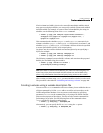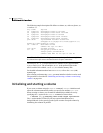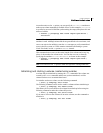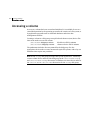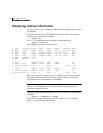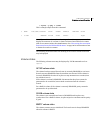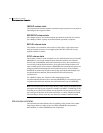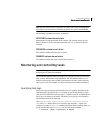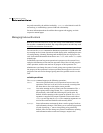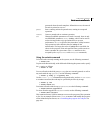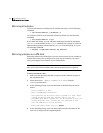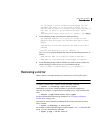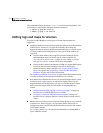
267Administering volumes
Monitoring and controlling tasks
Note: No user intervention is required to set these states; they are maintained
internally. On a system that is operating properly, all volumes are ENABLED.
The following volume kernel states are defined:
DETACHED volume kernel state
Maintenance is being performed on the volume. The volume cannot be read
from or written to, but certain plex operations and ioctl function calls are
accepted.
DISABLED volume kernel state
The volume is offline and cannot be accessed.
ENABLED volume kernel state
The volume is online and can be read from or written to.
Monitoring and controlling tasks
Note: VxVM supports this feature for private disk groups, but not for shareable
disk groups in a cluster environment.
The VxVM task monitor tracks the progress of system recovery by monitoring
task creation, maintenance, and completion. The task monitor allows you to
monitor task progress and to modify characteristics of tasks, such as pausing
and recovery rate (for example, to reduce the impact on system performance).
Specifying task tags
Every task is given a unique task identifier. This is a numeric identifier for the
task that can be specified to the
vxtask utility to specifically identify a single
task. Several VxVM utilities also provide a -t option to specify an alphanumeric
tag of up to 16 characters in length. This allows you to group several tasks by
associating them with the same tag.
The
vxassist, vxevac, vxplex, vxmirror, vxrecover, vxrelayout, vxresize,
vxsd, and vxvol utilities allow you to specify a tag using the -t option. For
example, to execute a
vxrecover command and track all the resulting tasks as a
group with the task tag myrecovery, use the following command:
# vxrecover -g mydg -t myrecovery -b mydg05



